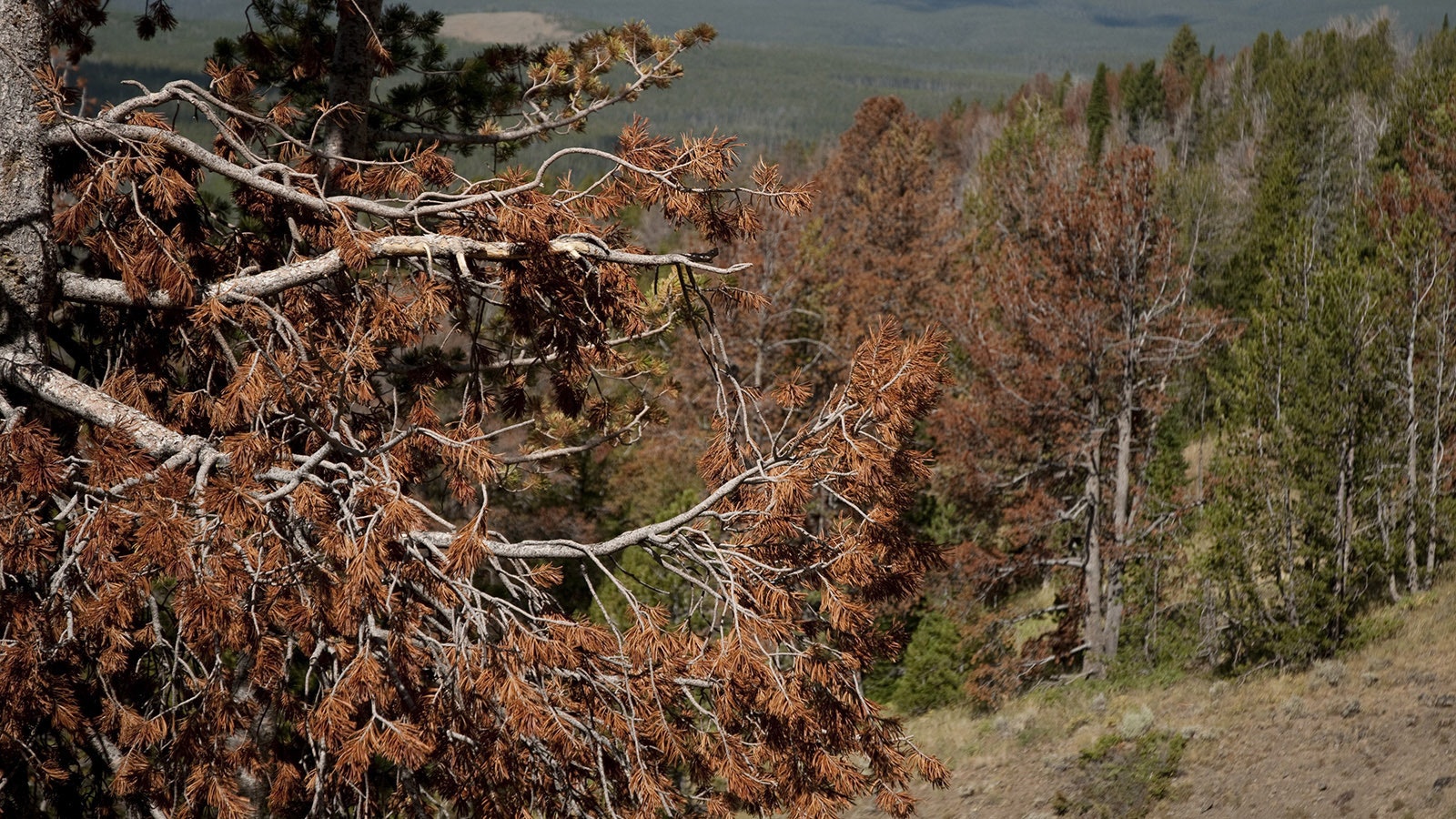Margie Johnson moved into a rural subdivision near Cody, Wyoming, to enjoy wild animals, not to watch them suffer, like she did one day in 2012.
Barbed wire from abandoned ranch fencing, some of it dating back to 1905, was loose on the ground right where her property line came up against the Shoshone National Forest.
Two mule deer bucks got entangled in it, resulting in their prolonged suffering and eventual deaths.
“They must have been sparring, like bucks will do. And they got the barbed wire wrapped around their antlers. And then it got wrapped around their bodies and around a tree,” Johnson told Cowboy State Daily on Tuesday.
But as Johnson sees it, the bucks didn’t die in vain. They helped inspire her and others to start pushing for the old barbed wire to be cleaned up.
Twelve years later, it all paid off Monday when Johnson, her neighbors and other volunteers pitched into remove 3 miles of old barbed wire from the Cody’s Country subdivision.
The subdivision is on the North Fork between Cody and the national forest and Yellowstone National Park in Park County.
“They (the bucks) gave their lives for yesterday,” she said. “I don’t believe there are any accidents. I believe that animals are partners on the planet with us, and those two are the reason that all that fence came down.”
‘Heartbreaking and Traumatic’
The events of that day in 2012 were sickening to watch, Johnson said.
By the time she, her husband and some neighbors intervened, the bucks were hopelessly trapped. When they were panicked by the presence of humans, their thrashing made the situation worse.
Finally, with some help from Wyoming Game and Fish wardens, they managed to cut enough to the wire to free the bucks.
“One did get up and walk away, but he was just stumbling,” Johnson said. “He could barely move, and it was just heartbreaking and traumatic.
“They were able to free that first guy (buck) and he stumbled away. But the second guy, he would try to get up, and he just couldn’t do it. He would try to get up on his legs and just fall back down. Finally, he just gave up and laid still.”
The game wardens decided to end that buck’s suffering on the spot, Johnson said. Odds are that the first buck, the one that stumbled away, also didn’t live much longer.
In contrast to the tragic fate of those bucks, things ended well for a young Wyoming mule deer buck last November. Some good Samaritans freed that buck after he got entangled in electric fence wire in a field along U.S. Highway 26 between Dubois and Riverton.
Annie Boedigheimer-Beaumont took a heartwarming video that shows two Wyoming men, identified as “Clay and Mike,” using wire cutters to free the nearly exhausted buck from the wire.
Volunteer Effort
Old, abandoned fence is problem for wildlife throughout the North Fork area, one of Johnson’s neighbors, acclaimed outdoors writer Jim Zumbo, told Cowboy State Daily.
Especially during the winter, it can cost many animals their lives, he said.
“Much of the time, if they try to jump the fence but they miss, their back two legs get caught between the top two barbed wires and the wires twist,” he said.
That leaves the animals trapped, doomed to a slow, agonizing death, he said.
On Monday, Zumbo opened his property as a staging area for more than 40 volunteers to come remove old barbed wire from the subdivision.
It was done through the Absaroka Fence Initiative, sponsored jointly by the U.S. Forest Service, the Nature Conservancy, BLM, Game and Fish and other agencies.
The Absaroka Fence Initiative provided the tools and equipment, while subdivision residents and other volunteers put in the sweat, Zumbo said.
Johnson said the memory of what happened to the two bucks still makes her sad. Just talking about it during a telephone interview nearly brought her to tears.
But she was overjoyed to see so many people pitching in enthusiastically to finally clean up all the old barbed wire on Monday.
“Everybody worked so hard. There was no complaining. No grousing,” she said. “We really kicked butt.”
‘You Take It One Mile Of Fence At A Time’
Abandoned fences, usually dating from the early 1950s-1990s, are a problem all over the Cody region and the rest of Wyoming, Kimi Zamuda of the Nature Conservancy told Cowboy State Daily.
She joined the wire removal efforts in the Cody’s Country subdivision.
“You’ve got some really old fence, really nasty fence” scattered across remote places all over Wyoming, she said.
Some newer fences can be hazardous to wildlife too, Zamuda said.
Wires might be too high for elk and deer to jump over them, or too low for pronghorn (antelope) to crawl under, she said.
The Nature Conservancy and others work with ranchers to install “wildlife-friendly” fences.
That might include lowering the top wires so animals can leap safely over them. Or smooth wires can be installed on the bottom, so antelope can wiggle them without getting snagged, Zamuda said.
Along with disease and winterkill losses, old or hazardous fences are one more thing taking a toll on Wyoming’s mule deer, Kemmerer-area outdoorsman Josh Coursey told Cowboy State Daily.
“There’s a lifetime of work to be done in Wyoming, many lifetimes of work” said Coursey, who heads the Muley Fanatics deer conservation group.
“You take it one mile of fence at a time,” he added.
Mark Heinz can be reached at mark@cowboystatedaily.com.











